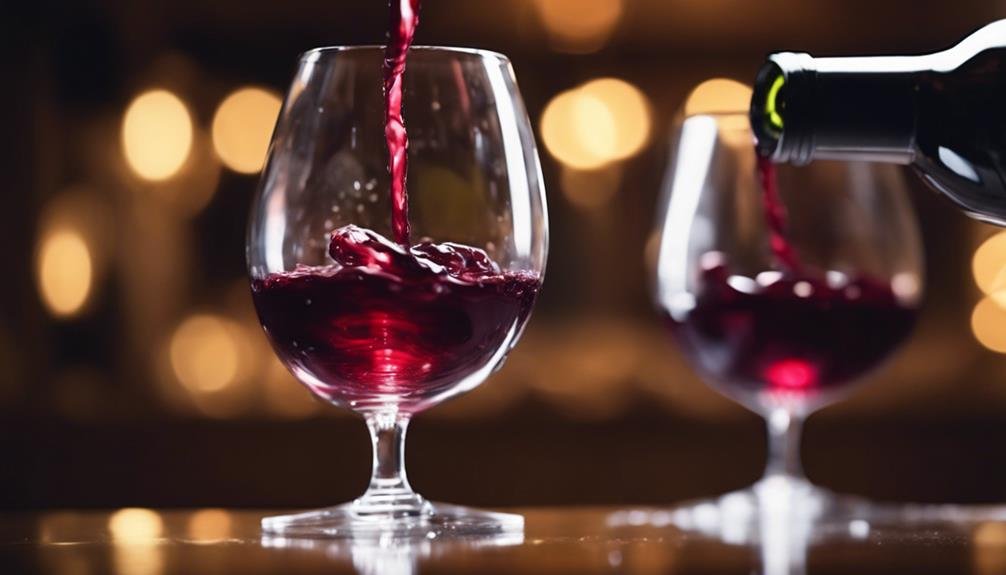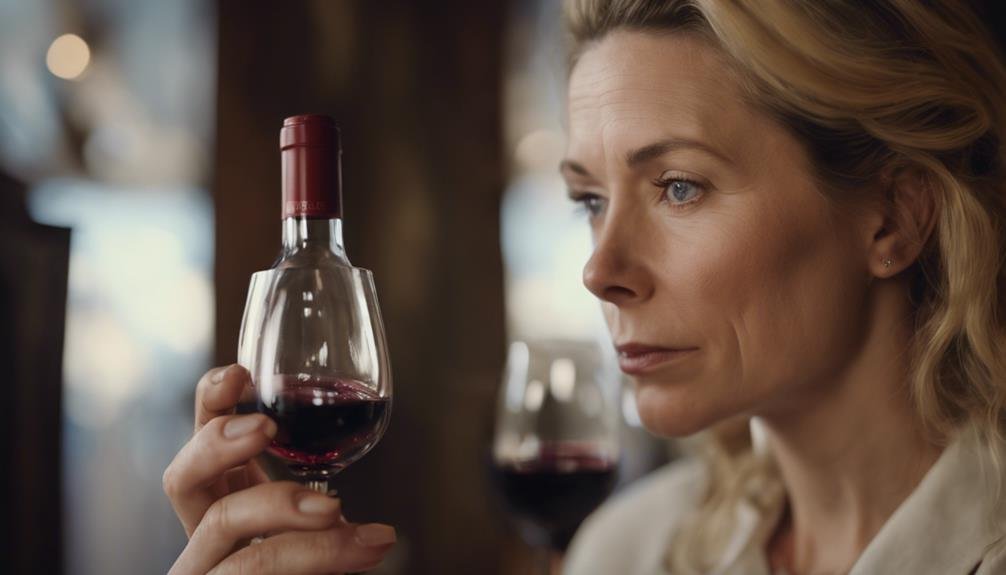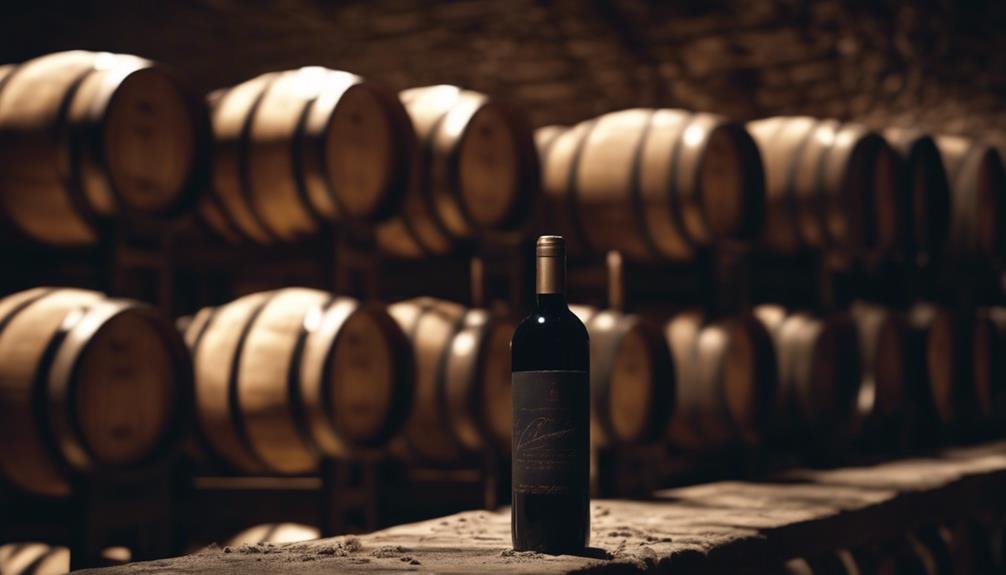Uncover the essence of wine aging through its hidden revelations and transformative journey. Structural traits like acidity and tannins play crucial roles in determining a wine's aging potential. Color metamorphosis from ruby red to orange hues reflects the maturation process. Aged wines offer a spectrum of flavors; ripe fruits evolve into deeper, spicier notes over time. Tasting profiles shift from fruity to earthy, featuring smoother textures and extended finishes. Wine expert Madeline Puckette shares valuable insights, from cellar management to ideal food pairings, enhancing the overall wine experience. Discover the intriguing evolution of flavors and textures awaiting within aged wines.
Aging Potential Indicators in Wines
When evaluating a wine's aging potential, key structural traits such as acidity levels and tannin structure serve as fundamental indicators.
Acidity in wine contributes to its freshness, vibrancy, and ability to age gracefully over time. Wines with higher acidity levels tend to have a longer lifespan as they help preserve the wine's integrity.
Tannins, on the other hand, provide structure and texture to the wine. They bind with oxygen over time, leading to a smoother and more integrated flavor profile as the wine matures.
Understanding the balance between acidity and tannin structure can help in selecting age-worthy wines that will develop complex and nuanced flavors with proper cellaring.
Understanding Color Changes in Aging
Understanding the change of wine hues as they age provides valuable insights into the complex process of wine maturation. Red wines progress from deep ruby to lighter shades, eventually revealing orange tones in their evolution. Factors like alcohol levels and sulfur content can influence these color changes.
Surprisingly, aged wines may exhibit opaque colors despite their maturation. Over time, the once vibrant red pigments can fade into a dull brown shade, showcasing the wine's age and maturity. It's remarkable that Merlot tends to shift to orange tones quicker than Cabernet Sauvignon, highlighting the variances in aging processes.
Observing these color shifts can offer clues about the wine's development and potential sulfurous effects on its appearance.
Evolution of Taste in Aged Wines

Observing the rich evolution of taste in aged wines provides a mesmerizing insight into the profound journey of wine maturation beyond its visual transformation.
As wines age, their flavors undergo a remarkable transformation. Bold fruit notes mellow into dried or stewed fruit flavors, offering a deeper, more complex profile. The evolution of spice in aged wines adds layers of sophistication, enhancing the overall tasting experience.
What was once a vibrant and fresh fruit flavor can develop into a richer and bolder expression over time. This interplay of dried fruit, spice evolution, and bold fruit creates a tapestry of complex flavors that showcase the depth and character that only time can impart to a well-aged wine.
Exploring Tasting Notes and Variations
Delving into the intricacies of tasting notes and their variations provides a nuanced understanding of the diverse characteristics found in wines as they evolve with age. Aroma profiles and complexity shift over time, revealing layers of scents ranging from floral and fruity to earthy and spicy notes. Textures evolve, becoming smoother or more velvety, while finish characteristics may lengthen, offering a lingering aftertaste that enhances the overall experience. Here is an example table showcasing the variations in tasting notes:
| Vintage | Aroma Profiles | Complexity |
|---|---|---|
| 2010 | Floral, red fruit | Medium complexity |
| 2015 | Earthy, black currant | High complexity |
| 2020 | Oak, dark cherry | Low complexity |
Insights From Wine Expert Madeline Puckette

Continuing our exploration of wine aging and tasting nuances, we now focus on gaining insights from esteemed wine expert Madeline Puckette.
Madeline Puckette, a renowned figure in the wine industry, offers valuable perspectives on cellar management and food pairings. Her expertise extends to the art of storing wines for peak aging potential, emphasizing the importance of temperature control, humidity levels, and bottle positioning.
Puckette's recommendations for food pairings showcase her deep understanding of how flavors interact to enhance the overall dining experience. Whether it's suggesting a bold red with a hearty steak or a crisp white with delicate seafood, her insights help elevate the enjoyment of both the wine and the meal.
Frequently Asked Questions
How Does the Storage Temperature Impact a Wines Aging Process?
Key conditions play a pivotal role in a wine's aging process. Storage temperature fluctuations can hasten or hinder this evolution. Consistent temperature control, ideally around 55°F, is essential for wines to mature gracefully and develop complex flavors over time.
Can the Shape of the Wine Glass Affect How Aged Wine Tastes?
The shape of the wine glass can greatly impact the sensory experience of aged wine. Varying shapes can influence aroma perception, taste, and overall enjoyment. Choosing the right glassware can enhance the complexities and nuances of aged wines.
Does Decanting Play a Role in Enhancing the Flavors of Aged Wines?
Decanting benefits aged wines by enhancing flavors through aeration effects. Allowing aged wines to breathe in a decanter can soften harsh tannins, reveal complex aromas, and elevate the overall tasting experience, showcasing the wine's true potential.
Are There Specific Food Pairings That Complement Well-Aged Wines?
When considering specific food pairings for well-aged wines, it is essential to align flavor profiles to enhance the culinary experience. Understanding the aging process and the evolving sensory attributes of aged wines is imperative for successful and harmonious gastronomic matches.
What Are Some Common Misconceptions About the Aging Potential of Wines?
Misconceptions surrounding wine aging potential often lead to missed benefits. Myth busting reveals that structural traits like acidity and tannin dictate aging, not price or region. Understanding the aging process guarantees maximum enjoyment and appreciation.
Conclusion
In the intricate tapestry of wine aging, each bottle holds a story waiting to be discovered. Like the changing colors and evolving tastes of aged wines, our journey through life is a reflection of time's transformative power.
Just as a fine wine matures with grace and complexity, so too do we evolve and grow, embracing the beauty of change and the wisdom that comes with it.
Embrace the journey, savor the moments, and toast to the mysteries of life and aging.
